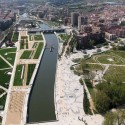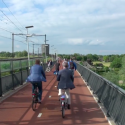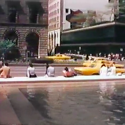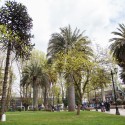Publicación de la semana: “Sustainable Urban Design, An Environmental Approach”
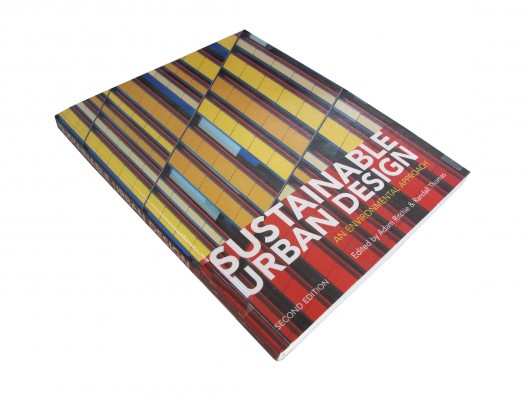
“Sustainable Urban Design, An Environmental Approach”
Editado por: Taylor & Francis
Idioma: Inglés
ISBN: 978-0-415-44782-9
Año: 2009
Autor: Varios, editado por Adam Ritchie y Randall Thomas.
Dónde encontrarlo: En este link de amazon.com
Sobre el libro:
Se cree que a finales del siglo XXI tres cuartos de la población mundial habitará en ciudades. Construirlas de forma saludable, vibrante y sostenible es un desafío excepcional que este libro se encarga de analizar. En él se describen principios básicos del diseño de nuestras ciudades futuras e ilustra cómo estas ideas se pueden llevar a la práctica a través de una serie de casos de estudio, siempre con la sustentabilidad como eje central.
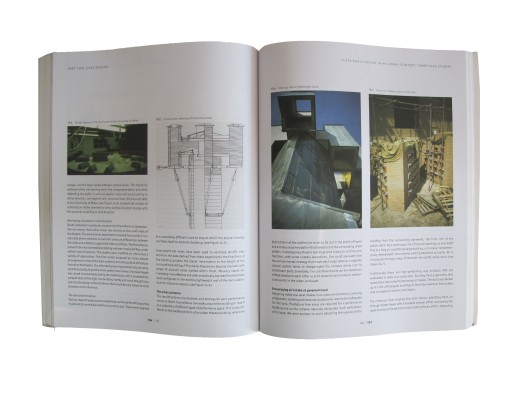
Contenidos:
Notes on contributors
Forewords
Preface
Note on the text
Acknowledgements
Part One, Sustainable urban design concepts
Introduction – Adam Ritchie
Urban planning and design – Patrick Clarke
Transportation – Robert Thorne, William Filmer-Sankey and Anthony Alexander
Landscape and nature in the city – Christina von Borcke
Building design – Randall Thomas and Adam Ritchie
Energy and information – Randall Thomas and Adam Ritchie
Materials – Sarah Royse
Water – Randall Thomas and Adam Ritchie
Waste and resource – Adam Ritchie
Summary – Adam Ritchie
Part Two, Case studies
Coopers Road Estate: regeneration – David Turrent
Parkmount: streetscape and solar design – Richard Partington and Adrian Hornsby
Coin Street Housing: the architecture of engagement – Graham Haworth
Sustainable design in an urban context: three case studies – Alan Short
BedZED: Beddington zero-fossil energy development – Bill Dunster
Bo01 and FLagghusen: ecological city districts in Malmö, Sweden – Eva Dalman and Cecilia von Schéele
Stonebridge: negotiating between traditional and modernist models of city housing – Chris Watson
“Made in Stockwell” and Deptford Wharves – Katie Tonkinson and Adam Ritchie
Millennium Water: Vancouver’s Olympic Village, Canada – Rachel Moscovich
Appendices
Solar energy, temperature and photovoltaics
Wind and water
Air quality
Acoustics
Fuel cells, turbines, engines, and their energy sources
Landscapes
Materials
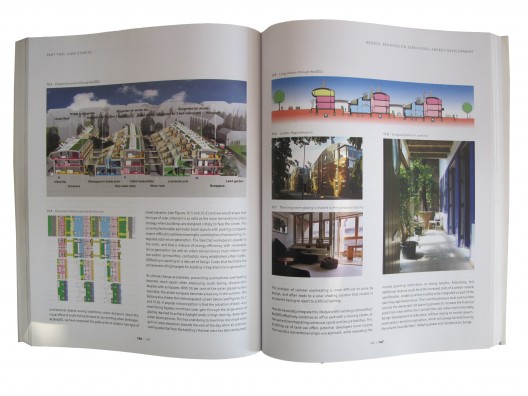
Extracto:
“Sustainability is about poetry, optimism and delight. Energy, co2, water and wastes are secondary. The unquantifiable is at least as important as the quantifiable; according to Louis Kahn, “the measurable is only a servant of the unmeasurable” and ideally the two would be developed together. Using a term coined by the eighteenth-century author Jonathan Swift, this is a modest proposal.
This book identifies the major issues in making cities environmentally sustainable. By the time you are reading this sentence, we will, fot the first time in history, have reached a milestone when more than half the world’s population, 3.3 billion people, are living in urban areas. Cities offer tremendous opportunities for community, employment, excitement and interest, which attract many of us. They can also create problems of congestion, noise and pollution which repel many others, or at least those who have the choice. These problems can be addressed, in part, through design, but sucess depends on recognising trade-offs and getting the balance right.”
“La sustentabilidad es sobre poesía, optimismo y deleite. Energía, co2, agua y deshechos son secundarios. Lo no cuantificable es, al menos, tan importante como lo cuantificable; según Louis Kahn, “lo medible es sólo un sirviente de lo no medible” e idealmente los dos serían desarrollados juntos. Usando un término del autor del siglo dieciocho Jonathan Swift, esta es una propuesta modesta.
Este libro identifica los asuntos más importantes en cuanto a hacer ciudades sustentables medioambientalmente. Mientras estés leyendo esta oración habremos, por primera vez en la historia, alcanzado un hito cuando más de la mitad de la población mundial, 3,3 mil millones de personas, estén viviendo en áreas urbanas. Las ciudades ofrecen tremendas oportunidades de comunidad, empleo, emoción e interés, los cuales atraen a muchos de nosotros. Pueden también crear problemas de congestión, ruido y contaminación, que repelen a muchos otros, o al menos, a quienes tienen la alternativa. Estos problemas pueden ser abordados, en parte, a través del diseño, pero el éxito depende en reconocer compensaciones y conseguir el equilibrio adecuado.”



